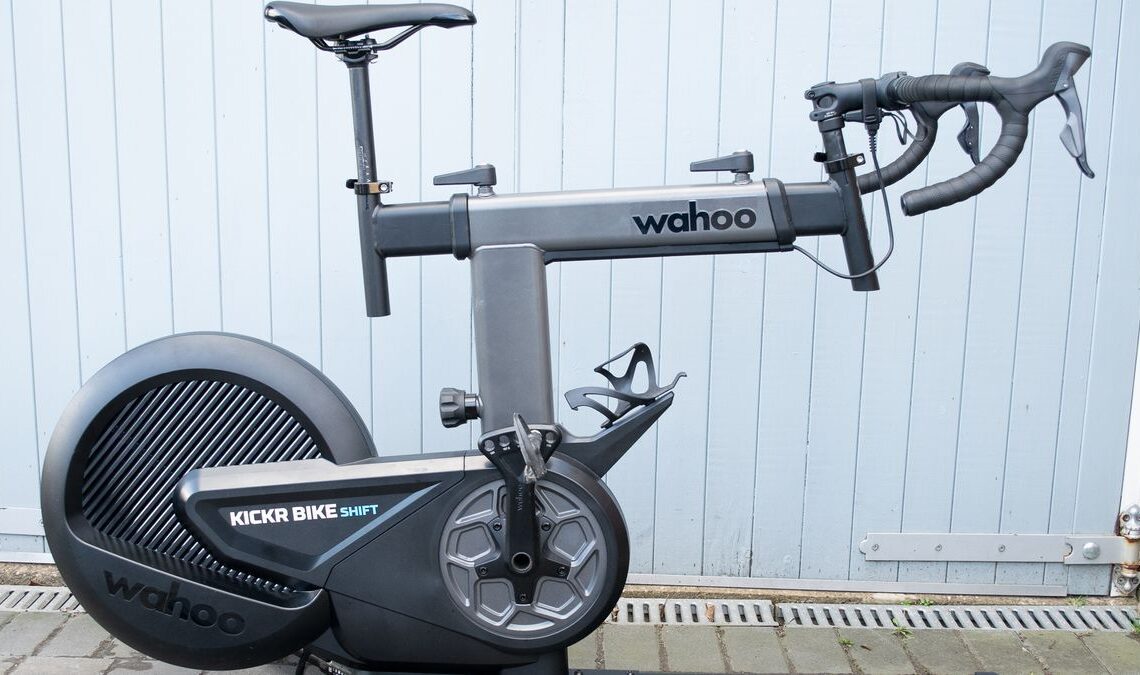Price: £2,699 / $2,999 / €2,999
Weight: 36kg
Drivetrain: Belt drive
Power Accuracy: + / – 1%
Connectivity: ANT+, ANT+ FE-C, WiFi, Bluetooth, Direct Connect
The Kickr Bike Shift indoor smart bike was launched in September last year, along with the flagship Kickr Move trainer. The Kickr Bike Shift (I’m just going to call it the Kickr Shift from hereon) slots into the range as a second-tier smart bike, sitting beneath the top-tier Kickr Bike.
The Kickr Shift is a hugely adjustable smart bike which uses an enclosed belt drive system and requires zero power calibrations. Despite being a new more affordable alternative from Wahoo, it’s still a premium purchase and the the Kickr Shift, like most of the best exercise bikes, is several hundred pounds/dollars more expensive than the best smart trainers. A smart exercise bike to train on and ride indoors may well be on your shopping list though if you are interested in a capable, good-looking, indoor solution and don’t want to have to install your bike on a trainer each time you ride, and have the cash of course.
The Kickr Shift is £800 cheaper than the top-spec Wahoo Kickr Bike but still carries an RRP of £2,700 / $2,999, though a year Zwift subscription is included in the price.
The Kickr Shift doesn’t have the real-time physical gradient change tech the Kickr Bike has, in simple language the top-flight Kickr Bike will physically tilt back and forth to replicate gradient differences. The Kickr Shift also has a different belt-driven drivetrain to the Kickr Bike which features a motor-driven electromagnetic resistance.
At £2,700 the Kickr Shift sits alongside competitor offerings like the Stages SB20 bike and Tacx Neo Smart Bike trainer. I’ve been putting in the hours on the Kickr Shift since it launched to see how it is to live with long-term.
Design and Specifications
The Wahoo website instructions say the Kickr Shift setup requires two people, though I managed it just fine solo, it was simple and easy to work out.
The bike comes in a large box. You can start by laying the box on its side and working out of it until it’s time to lift the bike out. All you need to do is bolt the trainer’s legs on with a 5mm hex key which is included, and torque to 25Nm if you have a torque wrench. Drop the seatpost and saddle into the frame, install the handlebars and stem, set the bar roll, attach your pedals…
Click Here to Read the Full Original Article at CyclingNews RSS Feed…

